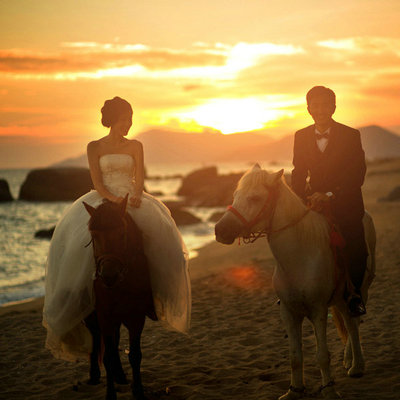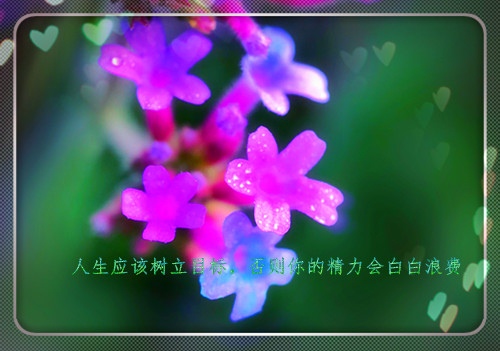
我要写篇论文,是关于紫禁城(故宫)导游词的翻译探讨。
中英都要有的
你可以到图书馆查一些资料,再用网上的翻译软件翻译过来,自己再修改一下.平时要多学习,既然是本专业的,一定会有兴趣.自己好好学习,不要遇事再去寻捷径.对于这座我们祖先留下的宝贵遗产不要那么陌生,不然就像端午节被外人申遗一样才后悔.
故宫导游词500字
北京故宫,旧称紫禁城,是中国明、清两代24个皇帝的皇宫。
现指位于北京的故宫博物院。
位于北京市中心,是无与伦比的古代建筑杰作,也是世界现存最大、最完整的木质结构的古建筑群。
故宫宫殿建筑均是木结构、黄琉璃瓦顶、青白石底座,饰以金碧辉煌的彩画。
故宫有4个门,正门名午门,东门名东华门,西门名西华门,北门名神武门。
面对北门神武门,有用土、石筑成的景山,满山松柏成林。
故宫的建筑沿着一条南北向中轴线排列并向两旁展开,南北取直,左右对称。
依据其布局与功用分为“外朝”与“内廷”两大部分,以乾清门为界,乾清门以南为外朝,以北为内廷。
外朝、内廷的建筑气氛迥然不同。
外朝以太和殿、中和殿、保和殿三大殿为中心,其中三大殿中的太和殿”俗称“金銮殿”,是皇帝举行朝会 的地方,也称为“前朝”。
是封建皇帝行使权力、举行盛典的地方。
此外两翼东有文华殿、文渊阁、上驷院、南三所;西有武英殿、内务府等建筑。
建筑造型宏伟壮丽,庭院明朗开阔,象征封建政权至高无上。
内廷以乾清宫、交泰殿、坤宁宫后三宫为中心,两翼为养心殿、东六宫、西六宫、斋宫、毓庆宫,后有御花园。
是封建帝王与后妃居住之所。
内廷东部的宁寿宫是当年乾隆皇帝退位后养老而修建。
内廷西部有慈宁宫、寿安宫等。
此外还有重华宫,北五所等建筑。
庭院深邃,建筑紧凑,自成一体,秩序井然。
给我一篇北京故宫的导游词,400字左右。
谢谢o(∩_∩)o...
Established in 1925, the Palace Museum was installed in the imperial palace of two consecutive dynasties - the Ming (1368-1644) and the Qing (1644-1911). The magnificent architecture, also known as the Forbidden City, and the vast holding of the imperial collections of paintings, calligraphy, ceramics, and decorative objects make it one of the most prestigious museums in China and the world at large. In 1961 the imperial palace was designated by the State Council as one of China's foremostprotected cultural heritage sites, and in 1987 was made a UNESCO World Heritage site. Once inside, visitors will see a succession of halls and palaces spreading out on either side of an invisible central axis. The buildings' glowing yellow roofs levitating above vermilion walls is a magnificent sight.The painted ridges and carved beams all contribute to the sumptuous effect.Known as the Outer Court, the southern portion of the Forbidden City centers on three main halls-Hall of Supreme Harmony (Taihe dian), Hall of Central Harmony (Zhonghe dian), and Hall of Preserving Harmony (Baohe dian)with Belvedere of Embodying Benevolence (Tiren ge) and Belvedere of Spreading Righteousness (Hongyi ge) flanking them.It was here in the Ourter Court that the emperor held court and conducted grand audiences.Mirroring this arrangement is the Inner Court comprising the northern portion of the Forbidden City.The Palace of Heavenly Purity (Qianqing gong), the Hall of Union (Jiaotai dian), and the Palace of Earthly Tranquility (Kunning gong) straddle the central axis.On the east and west are residences called the Six Eastern Palaces and the Six Western Palaces.An Imperial Garden is laid out at the north end.
写一篇关于故宫的 导游词二百字
故宫 北京故宫位于北京市中心,是明清两代的皇宫,又称为“紫禁城”(历代宫殿都象“象天立宫”,以表示君权“受命于天”)。
由于君为天子,天子的宫殿如同天帝居住的“紫宫”禁地,故名“紫禁城”。
故宫始建于明永乐四年(1406年),永乐十八年(1420年)建成。
历经有清两个朝代24个皇帝。
故宫规模宏大,西宽750米,南北长960米,占地72万平方米,建筑面积15万多平方米,有房屋9999间,是世界上最大最完整的古代宫殿建筑群。
为了突出帝王至高无上的权威,故宫有一条贯穿宫城南北的中轴线,在这条中轴线上,按照“前朝后寝”的古制,布置着帝王发施令,象征政权中心的三大殿(太和殿、中和殿、保和殿)和帝后居住的后三宫(乾清宫、交仄殿、坤宁宫)。
在其内廷部分(乾清门以北),左右各形成一条以太上皇居住的宫殿—宁春宫,和以太妃居住的宫殿—慈寿宫为中心的次要轴线。
出于防御的需要,这些宫殿建筑的处围筑有高达10米的宫墙,四周有角楼,外有护城河。
故宫御花园,原名宫后苑,今俗称御花园,占地一万二千平方米。
以钦安殿为中心,园林建筑采用主次相辅,左右对称的格局,布局紧凑,古典富丽。
殿东北的堆秀山,为太湖石叠砌而成,上筑御景亭,每年重阳节帝后在北登高。
1987年故宫被联合国教科文组织,评定为“世界文化遗产”,是建筑艺术的经典之作。
朋友们,因为时间仓促,这次对故宫的介绍就到此结束。
下次有机会再带大家详细的参观。



